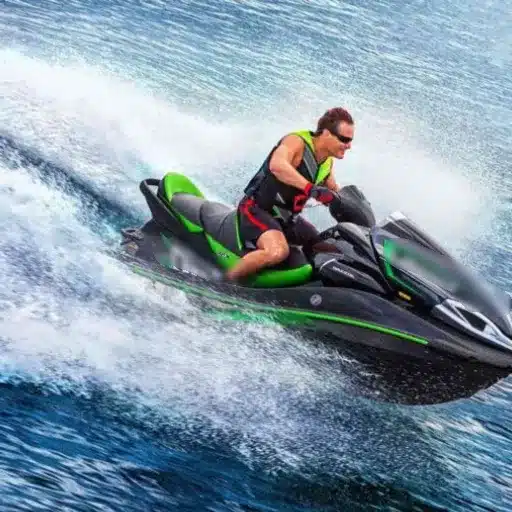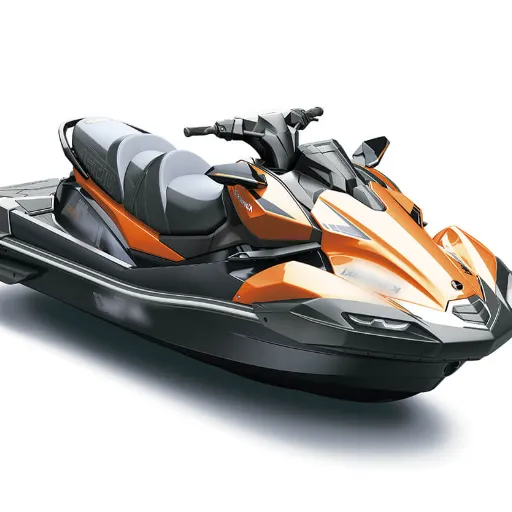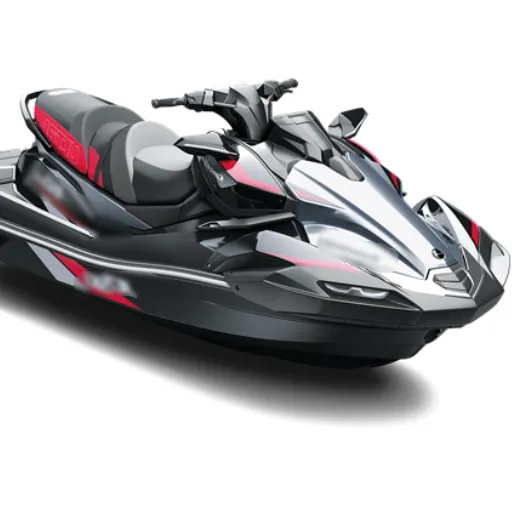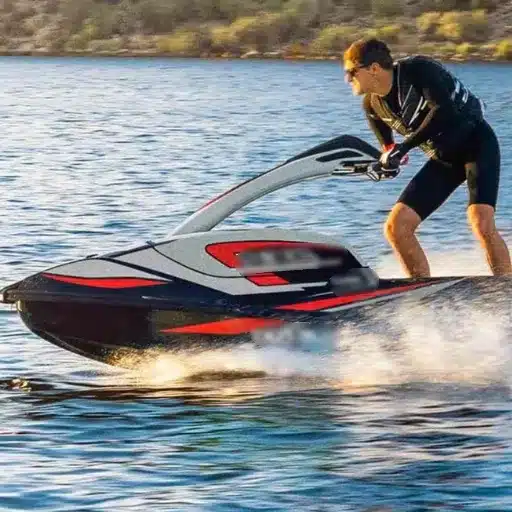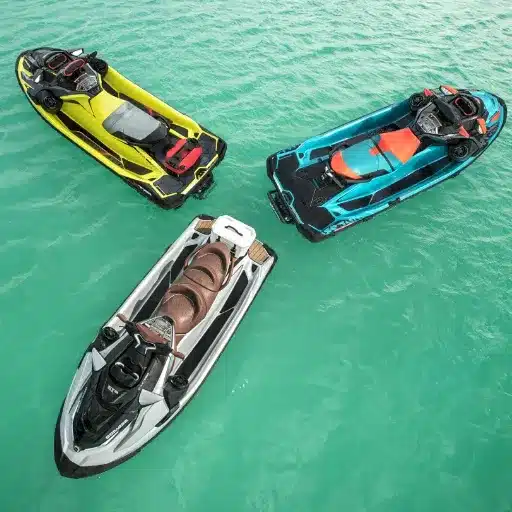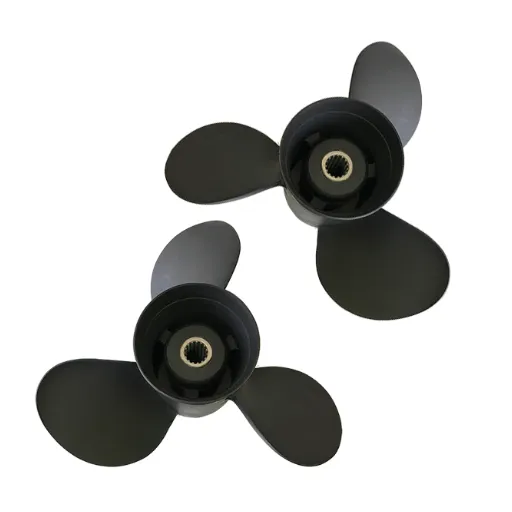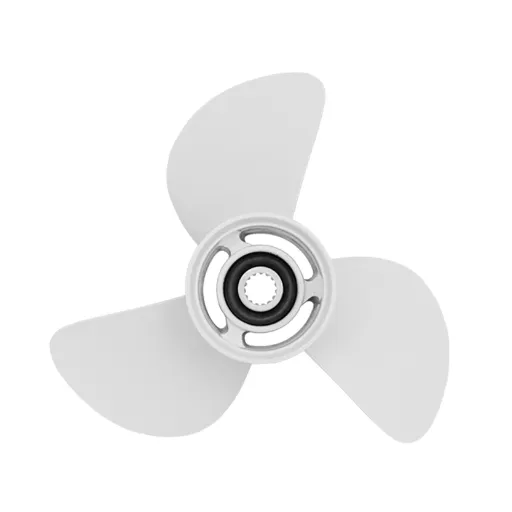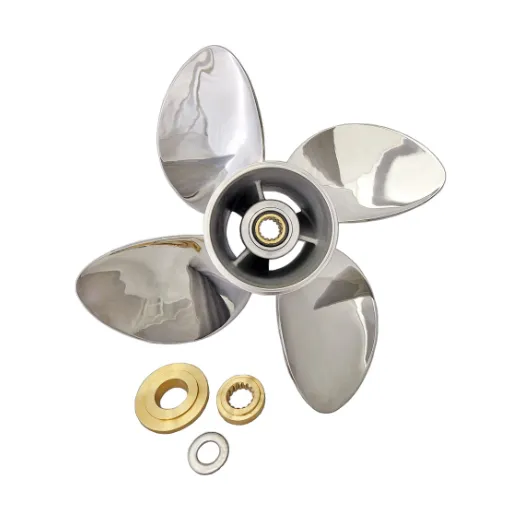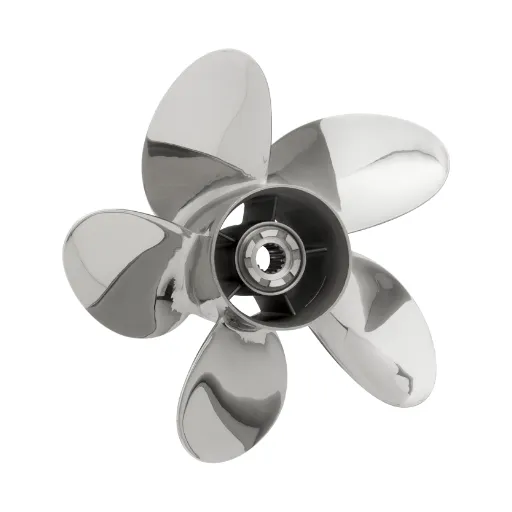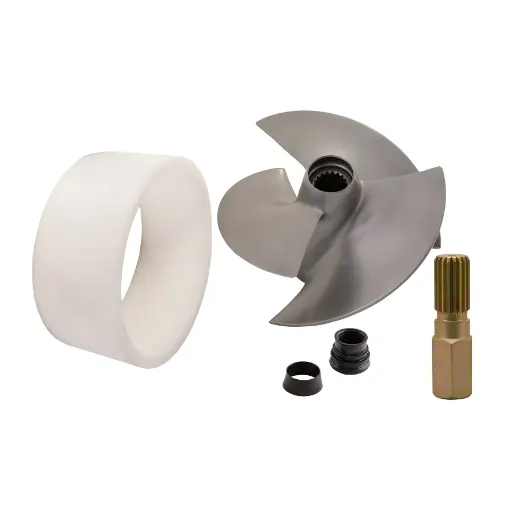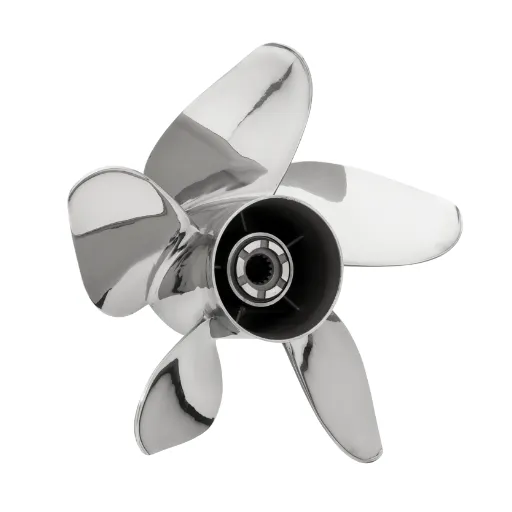Adrenaline-pumping watercraft and a few experiences deliver more than a high-performance jet ski. These fantastic designs combine the latest technology with aerodynamic design and raw power to unleash nearly unacceptable speed and agility on the water. If you love speed, a professional racer, or even just someone who would want to feel the thrill of water-adventure riding, know what today’s fastest jet skis have to offer. This article will bring together the top-performing models for an in-depth technical examination of their state-of-the-art features, performance measures, and what makes them stand out and compete in a crowded market. Ready to explore jet skis that represent the be-all and end-all of aquatic speed and precision, redefining watercraft innovation and pushing performance boundaries?
Introduction to Fastest Jet Skis
An Engineering View on Speed and Performance in Jet Ski
Modern jet skis have been engineered for exceptional speed and unique performance, thanks to advancements in marine technology and hydrodynamics. The fastest jet skis on these markets have a top speed of above 70 mph, and high-performance engines like Yamaha’s SVHO engine and Kawasaki’s Eaton TVS supercharged engine contribute to that performance. Such great propulsion systems provide surge acceleration and easy handling, even in challenging water conditions.
Hydrodynamic hull designs maximize speed and stability by reducing drag while maintaining absolute control at such tremendous velocity. Such jet skis, like the Kawasaki Ultra 310R and Sea-Doo RXP-X RS, are prestigious examples, combining the latest aerodynamic technology with more robust and lightweight materials, such as fiberglass-reinforced composites, for increased durability and performance.
Additionally, riders can modify their jet ski performance according to conditions and preferences with advanced digital engine management systems, variable trim controls, and race-inspired steering systems. All other enhancements must ensure that there’s no compromise between speed and agility, providing a balance between power, efficiency, and ride comfort. Such innovations imply the bound technical character of the fastest jet skis, which literally become engineering marvels of modern times in watercraft engineering.
Importance of Choosing the Right Model
Selecting an appropriate jet ski model is crucial for achieving optimum performance, safety, and user satisfaction. Engine capacity, petrol consumption, weight, or intent (recreational, touring, or competitive racing) must fit the end-user’s requirements and skill. Hence, high-performance jet skis with larger engines and advanced handling systems are designed for experienced jet skiers, placing a strong emphasis on speed and agility, while entry-level jet skis tend to prioritize stability and ease of control. According to the latest industry reports, the pace of advancement in green technologies, including fuel-efficient engines and lower-emission systems, is increasing, thereby highlighting the need for sustainability considerations. Additionally, understanding the meaning of hull design, whether it features sharp corners on a flat surface or glides smoothly over choppy water, is essential for improving the riding feel. All these imply the search must be placed well in observing a jet ski’s capacity vis-a-vis the considered application to ensure the demand is well met in terms of use and pleasure.
2025 Trends in Jet Ski Technology
The year 2025 is expected to witness disruptive growth in jet ski technology, as manufacturers focus on cutting-edge innovations to enhance performance while also considering safety and environmental concerns. One of the key considerations has been the introduction of electric propulsion systems, aiming to minimize emissions and noise levels while achieving competitive power outputs. These are powered by large-capacity lithium-ion batteries or the yet-to-be-widely available solid-state batteries, which promise long-lasting performance and fast charging compared to their predecessors. These batteries, supported by thermal management systems, will also enhance strength and safety, enabling jet skis to operate effectively in various environmental conditions.
Innovating is another window of scope when combining innovative technology for user experience optimization. Jet skis in 2025 may be equipped with advanced onboard navigation systems featuring GPS with real-time analytical data, adaptive speed controls, and automated safety mechanisms for collision avoidance and stability assistance. These many models will likely come with app connectivity for remote monitoring and diagnostics, allowing riders to view battery health information, maintenance requirements, and performance metrics directly from their smartphones. The stress on interconnected systems shows the growing influence of the Internet of Things (IoT) on marine recreation.
Advancements in materials science are also contributing to the development of lighter and stronger hull designs. Using modern composite materials, including carbon fiber-reinforced polymers and graphene-infused structures, one can decrease weight while retaining rigidity and impact resistance. Being able to go faster and perform better due to such advancements is what fuel efficiency and battery performance are about, versus just influencing handling and maneuverability. Together with advances in aerodynamic and hydrodynamic designs, jet skis of 2025 will guarantee smoother and more efficient rides across turbulent waters. Consequently, such technologies are helping to evolve green high-speed jet skis toward global sustainability goals while meeting consumer demands.
Top Fastest Jet Skis of 2025
2025 Sea-Doo RXP-X 325: Specifications and Features
The new standard in high-performance personal watercraft has been set with the 2025 edition of the Sea-Doo RXP-X 325, which has been carefully developed and built with modern technology. A Rotax 1630 ACE engine powers it rated at 325 horsepower, affording the machine supreme acceleration and top speed that is among the very best in its class. The latest ST3 hull provides it with extra stability and better handling, even in choppy waters.
The iBR system has been upgraded for safety and enhanced handling, thereby improving the braking system, as seen in the RXP-X 325. The Tech Package includes a 7.8-inch full-color touchscreen display with GPS integration, Bluetooth connectivity, and live performance analysis. Ergolock seating will also be provided as part of this package, designed for ultimate comfort for the rider while maintaining optimum weight distribution during high-speed maneuvers.
Some other features are a huge storage capacity of 40 gallons, a great sound system, and an Eco mode for fuel efficiency. The 2025 Sea-Doo RXP-X 325 is a high-performance machine that combines speed and agility with modern safety and technical features, positioning it at the top of the list for thrill-seekers and watercraft enthusiasts.
Key Specifications:
- ✓ Engine: Rotax 1630 ACE – 325 HP
- ✓ Hull Design: ST3 / T³-R Platform
- ✓ Display: 7.8-inch Full-Color Touchscreen
- ✓ Storage: 40 Gallons
- ✓ Special Features: iBR Technology, Ergolock Seating, Eco Mode
Performance Analysis of the RXP-X 325
The 2025 Sea-Doo RXP-X 325 features an advanced powertrain paired with aerodynamic styling, delivering exceptional performance for all purposes. Maximizing the power-to-weight ratio afforded by 325 horsepower derived from a Rotax 1630 ACE engine, it stands at the top of its class. Such power enables a roaring acceleration, reaching 0 to 60 mph in just about 3.6 seconds, making it best-suited for racing competitions.
The hull is equipped with a T³-R platform, which provides sharper cornering and improved stability at high speeds. Coupled with the Ergolock-R cockpit system, it imparts an extraordinary degree of control to the user, therefore reducing fatigue in longer operating sessions on water. The incorporated Variable Trim System (VTS) enables fine adjustments to suit ever-changing water conditions, ensuring optimal performance on both choppy and smooth surfaces.
Fuel consumption has been significantly improved through the inclusion of an intelligent eco-mode, enabling the RXP-X 325 to achieve competitive fuel efficiency without compromising speed and torque. Testing indicates a range of approximately 60 miles per tank under mixed riding conditions, which consist of bursts of high speed coupled with steady cruising.
A braking mechanism with a quick positive lock is a concise yet accurate description of an old-school braking system. The braking system on the RXP-X 325 utilizes Sea-Doo’s patented intelligent brake and reverse (iBr) technology, offering riders additional stopping power and control. Safety metrics affirm that stopping distance in critical situations is significantly reduced when compared with conventional stop-and-go systems.
When we combine performance data, engineering enhancements, and user-oriented features, we realize that the 2025 Sea-Doo RXP-X 325 is setting a new benchmark for high-performance personal watercraft.
Comparison of Speed Charts with Other Models
In terms of pure speed, the Sea-Doo RXP-X 325 2025 is well-equipped, often outpacing competitors in the high-performance category of personal watercraft. Some experts state that the RXP-X 325 can take its 325-horsepower engine to a top speed of about 68 mph when pushed in perfect conditions i.e., well above the Yamaha GP1800R SVHO and Kawasaki Ultra 310R.
Key performance testing indicates that the 0-60 time for the RXP-X 325 falls within the range of 3.6 seconds, which is faster than the Yamaha GP1800R (3.8 seconds) and the Kawasaki Ultra 310R (4.2 seconds). The finer acceleration is due to the power-to-weight ratio and hull dynamics, which are optimized for minimum drag and maximum thrust. Moreover, the tuned iTC system significantly benefited the craft in situations requiring precise adjustments to the rapid acceleration or deceleration of the craft, thereby maintaining consistency in stability and performance.
Among other things, these comparative data highlight the Sea-Doo RXP-X Aircraft 325’s absolute dominance in straight-line acceleration and speed, emphasizing the technological improvements that create a better water experience, which give it an edge over all others in this class.
Performance Comparison: Top Models
| Model | Horsepower | Top Speed | 0-60 mph |
|---|---|---|---|
| Sea-Doo RXP-X 325 | 325 HP | ~68 mph | 3.6 seconds |
| Yamaha GP1800R SVHO | 250 HP | ~67 mph | 3.8 seconds |
| Kawasaki Ultra 310R | 310 HP | ~67 mph | 4.2 seconds |
*Performance figures based on optimal conditions and testing
Understanding Jet Ski Acceleration and Speed
The Benchmark Acceleration of Leading Models
When analyzing the acceleration rates of the most powerful jet ski model, factors such as horsepower, hull design, and weight-to-power ratio must be taken into account. The 2025 Sea-Doo RXP-X 325, propelled by a 325-hp Rotax 1630 ACE engine, comfortably scrapes under 3.6 seconds to cover 0-60 mph in acceleration, making it considered amongst the best for rapid acceleration. The Kawasaki Ultra 310R, capable of generating furious power from its 310-hp supercharged inline-four engine and responsiveness, races to 0-60 mph in approximately 3.8 seconds.
With its lightweight hull built of NanoXcel2 and a 250-horsepower supercharged motor, the GP1800R SVHO of Yamaha is in tight competition for the best rankings by being able to do the 0-60 run in under 4 seconds. While raw performance lends these models their superiority, advanced control systems such as variable trim and intelligent braking further optimize their acceleration dynamics. These precision control systems, together, set a new standard in terms of jet ski performance in today’s age.
Jet Ski Speed Factors
Several factors affect the speed and performance of a jet ski ranging from specific technical issues to environmental conditions. Engine capacity and type, whether naturally aspirated or supercharged, can determine the upper limit of attainable speed. Supercharged engines generate more power; thus, they can accelerate much faster and attain very high speeds. Similarly, the design of the hull, which directly affects hydrodynamic efficiency, is crucial. Very light materials, such as NanoXcel2 or reinforced fiberglass, also help reduce drag.
A jet ski with a lower-grade fuel will, in fact, see a drop in engine life, performance, and hence, into less-than-desirable speeds. All environmental conditions also significantly influence the speed-determining parameters, such as wind speed, wave height, and water density. The calmer the water and the more suitable the wind, the better the performance. Then comes the weight of the rider, which affects stability and acceleration since heavier loads provide more resistance in the water. Maintenance and upkeep are also required to minimize wear and tear; regular lubrication and cleaning of the intake grate are essential for jet skis to achieve their optimal speeds and performance at a minimum level.
Turbo Technology in Jet Skis
Turbocharging is a significant step forward for jet ski performance enhancement, as it increases power output without requiring an increase in engine displacement. Turbochargers utilize exhaust gases to spin a turbine wheel within the compressor assembly, which then compresses and delivers the incoming air into the engine’s combustion chamber. This compressed air contains a higher concentration of oxygen, enabling better combustion of the air-fuel mixture and resulting in increased power and torque.
Jet skis equipped with modern turbochargers have higher acceleration, allowing riders to reach top speed more quickly. A good example is how with the help of a turbo, this jet ski’s engine performance can be increased by at least 40%, depending on the turbo design and calibration. The turbo systems are also supposed to help retain power output at high altitudes, wherein decreasing air density usually results in an inefficient engine.
Engaging turbo technology requires modifications to stronger engine components that can withstand greater pressure and heat. Usually, manufacturers reinforce pistons with advanced cooling systems and high-strength materials to ensure the engine can withstand such arduous conditions. Regular inspection and maintenance of the turbo system will help prevent the buildup of carbon or mechanical wear that would otherwise hamper performance.
Implemented with precision engineering, turbo-charging enhances the riding experience, making jet skis faster and more agile in handling various aquatic environments. This is the forefront of marine engineering, delivering new power and efficiency to personal watercraft.
Sea-Doo’s Innovations in Personal Watercraft
The Development of Sea-Doo RXP-X Series
The Sea-Doo RXP-X series has evolved significantly with its advancements, setting yet another performance benchmark for the PWC market. Initially designed for high-speed water sports, the RXP-X series is now an advanced platform that combines precise handling, unrestrained acceleration, and technologies aimed at rider convenience.
One significant development in recent models is the utilization of the Rotax 1630 ACE engine, which can yield power of up to 300 hp. Attention has been given to engineering the powerplant for reliability and efficiency, coupled with high torque and top-end performance, to thrill the rider with endless speeds while maintaining control. Paired with the engine is the innovative hull design, named T³-R, which was developed for greater stability, precision in cornering, and responsiveness in any water condition.
The series also brings in innovation in rider ergonomics with the Ergolock system. The Ergolock system combines narrow racing seats and angled footwells to provide the rider with a safe and comfortable position during high-speed maneuvers that would otherwise cause fatigue and reduce control precision. Then again, consider the brilliant addition of Intelligent Brake and Reverse (iBR) technology: the first-ever braking system on a PWC, which aids in enhanced safety and improved ease of navigation across various water environments.
Higher up, these exciting models brought on a wealth of interaction, board data, and real-time information on speed, RPM, fuel volumes, and even mapping through a high-res 7.8″ full-color display. Currently, with features such as smartphone integration, riders can listen to music, access GPS, and make phone calls using simple controls.
Technical advancements made the RXP-X series the number one competitor for the highest skill-based PWC, recreation, and play. With its constant focus on power, innovation, and precision, Sea-Doo is able to better enable the personal watercraft experience to enthusiasts and professional racers alike.
New Features for 2025 Sea-Doo RXT-X
The 2025 Sea-Doo RXT-X is equipped with innovations that aim to push the limits of performance, toughness, and adaptability in the PWC realm. Leading the way in innovation is the upgraded Rotax 1630 ACE engine, now delivering 325 horsepower in acceleration and top speed. This high-power output is equipped with an advanced cooling system to minimize thermal stress during prolonged use, thereby enhancing longevity.
The redesigned ST3 hull enhances both stability and maneuverability, particularly in choppy water conditions, thereby giving riders more confidence at high speeds. Sea-Doo has also integrated its newest iBR system, offering excellent stopping control with an increased ability to operate in confined areas. Other key enhancements include the adaptive ergonomic package, featuring modular-style handlebars and an adjustable seating system that accommodates riders of various sizes for enhanced comfort and control.
Additional technological enhancements include a new 7.8-inch full-color display with high resolution, real-time telemetry, fuel economy data, and GPS navigation. The system supports full Bluetooth connectivity, allowing integration with a wide variety of smartphone apps. In addition, the RXT-X features the latest Sea-Doo LinQ accessory system, allowing quick and secure attachment of cargo and gear for those looking to really show their custom side.
Altogether, these upgrades place the 2025 Sea-Doo RXT-X at the forefront of innovation, providing unmatched performance, high technology, and comfort to all riders, from the casual user to professional riders.
Consumer Feedback and Reviews
From the beginning, the 2025 Sea-Doo RXT-X has been widely acclaimed by consumers for its innovative, performance-oriented, and user-friendly features. The hull was redesigned, and now users speak highly of the stability and greater handling capability it offers on choppy water, thereby catering to thrill seekers who opt for high-performance experiences. Everybody has raved about the LinQ accessory system, with users loving how it allows them to mount their cargo securely for long trips.
On the technology front, positive comments have been bestowed upon the new and larger 7.8-inch display for its clear readability and seamless interconnectivity with smartphone applications, thereby giving a more intuitive and connected riding experience. Customer reviewers said the upgrade in engine performance has given the jet ski such stupendous acceleration that the RXT-X can meet the top-tier speed benchmark within its class. Although hailed with high praise, some riders were less impressed with the pricing, suggesting that the advanced features are a bit on the higher side compared to competing models currently available on the market. All in all, the satisfaction metrics weigh heavily toward approval and loyalty from recreation-based and more performance-based users alike, cementing the RXT-X as one of the front-seat players in the personal watercraft universe.
Future of Jet Ski Racing and Performance
New Trends in Jet-Ski Racing
Jet-ski racing has been evolving with every change in technology, consumer interest, and environmental considerations, shaping the present. A significant trend is related to electric watercraft, as manufacturers are beginning to turn their attention to reducing carbon emissions and promoting sustainability. Over the past two years or so, manufacturers have been increasingly developing electric jet skis with high-capacity lithium-ion batteries, aiming to serve as an environmentally friendly alternative to traditional jet skis that operate on carbon-based fuels, which contribute to water pollution. These electric jet skis offer speeds, torque, and range comparable to those of fuel-powered models.
Other trends include increasingly advanced telemetry and data analysis tools. Real-time performance data, obtained through GPS tracking, accelerometers, and onboard computers, is utilized by racers and their support teams to refine their strategies and handling. This new level of refinement really brings into focus the improvements to performance and the experience offered by the competition.
The increasing demand for customization and modular design changes the way a product is viewed under existing standards. The racers examine a watercraft that allows adjustable components, such as throttle response, hull shape, or control systems, to adapt to various racing conditions and personal preferences. This trend, therefore, enhances engagement and offers more scope for personalization within the sport.
Finally, safety innovations that seek to optimize stability and minimize risk in extreme maneuvers are being widened in scope with novel materials technologies and automation systems. Automatically controlled adaptive suspension and collision avoidance systems are becoming more and more commonplace to ensure safety, without compromising performance. These emerging trends, in essence, promise a more dynamic, sustainable, and user-focused future for jet ski racing.
Predictions for Jet Ski Models in 2025
From my perspective, I envision jet ski models in 2025 that will integrate advanced technologies while being designed for sustainability, to meet the demands of changing consumers and a shifting environment. One such development in this respect will be the significant penetration of electrically powered jet skis. Advances in battery technology will enable higher energy density and faster charging times, allowing these models to travel farther and perform as well as their fuel-powered counterparts. Besides, increased consciousness on preserving the environment will make manufacturers focus on crafting jet skis that offer zero emissions and can, therefore, have the least harmful effect on the marine ecosystems.
Advanced systems on board will enhance the personal user experience and guarantee safety. Artificial intelligence and IoT connectivity will increasingly find their way into jet skis, allowing users to check performance metrics, navigation routes, and weather conditions in real-time using a mobile app or an on-board display. Semi-autonomous or autonomous emergency braking, along with very accurate collision detection, would likely become standard to ensure rider safety in high-speed environments.
In general, jet ski models in 2025 will be brighter, cleaner, and more efficient. Innovation would mean better watercraft and less compromise on global sustainability objectives. Consumers are looking forward to a new time in jet skiing that marries excitement with convenience and environmental responsibility.
Impact of Technology on Racing Performance
For me, advanced technology integration has transformed jet ski racing to its very essence, making it more efficient in both competitive performance and safety aspects for the contestants. Actually, modern racing jet skis feature computer-operated fuel injection systems and hydrodynamically designed hulls to maximize waterborne speed and maneuverability. They use advanced composites for optimal mass distribution, thus facilitating the rider to optimize acceleration and cornering performance. All these technical advances are supported by telemetry software and systems that record relevant data, such as speed, engine parameter changes, and water conditions, in near real-time. This data assists racers and race teams in strategizing whenever needed to gain an upper hand in competitions.
The evolution of artificial intelligence and machine learning into key actors in the data-inspection-and-pattern-recognition-and-race-strategy-optimization act is underway. AI-powered tools identify inefficiencies in riding technique or engine output and recommend personalized adjustments tailored to each rider’s style. On the other hand, wearables gather data while aiding in performance improvement by monitoring the rider’s physiological attributes, such as pace, heart rate, and endurance, and then feeding this information into the training regime to build optimal stamina for races.
On the other hand, technology also serves as an assurance of the sport’s safety. We saw collision-detector systems combined with sensor-based proximity alerts to avoid incidents in sharp maneuvers. Together, therefore, the technological hints show how strongly engineering and data analysis have contributed to evaluating the jet ski race into a high-action and safe competitive ground.
Reference Sources
- RideNow – Fastest Jet Ski Models in 2025: Ranked by Speed and Performance: Highlights top-performing jet ski models, including their features and speed capabilities.
- Boat Sail Mag – Best Jet Skis in 2025 | Buyer’s Guide: Offers a comprehensive guide to the best and fastest jet skis available in 2025.
- CC Cycle Plaza – Fastest Jet Ski | Fastest Personal Watercraft Models: Details the fastest jet ski models, including their speed, power, and performance features.
- Reddit – Which Model of Jet Ski Can Go Beyond 120 km/h?: Discusses high-speed jet ski models and modifications for enhanced performance.
- Find more info now.
Frequently Asked Questions (FAQs)
What is the fastest jet ski?
Currently, Sea-Doo RXP-X 325 RS 2025 is considered the fastest jet ski. This superb performance would feature 300 horsepower from PWC’s supercharged engine. With a maximum speed of nearly 70 mph, this jet ski is designed for aggressive acceleration and precise handling. The light weight of the jet ski felt like a feather to chop, and the hull design was advanced enough to pronounce its status as the number one sit-down jet ski for the experienced. The RXP-X 325 RS further boosts its acceleration with a feature called launch control.
How does the Kawasaki Jet perform against the Yamaha Waverunner?
With different strengths, manufacturers produce jet skis with high performance to suit various tastes. The Ultra 310 is Kawasaki’s leader in high-performance jet skis, boasting a powerful-to-weight ratio that is enhanced by supercharging and capable of speeds of up to 67 mph. On the faster end of the spectrum, we have the Yamaha GP1800R SVHO, which excels with its responsive handling character and hull design that performs well in choppy waters. Given the individual marketing points of each, a rider must know their requirements and style before purchasing a model from Kawasaki or Yamaha.
What makes the 2025 Sea-Doo RXP-X 325 fast?
The 2025 Sea-Doo RXP-X 325 is meant to cater to speed and performance. The modified engine provides more than enough horsepower to reach speeds of 70 miles per hour. The jet ski’s lightweight construction and virtually perfect hull design make it a watercraft to be reckoned with in terms of pure agility and responsiveness. It features launch control, which enables quick acceleration, and an advanced impeller system that delivers performance-oriented water flow. It has sufficient fuel capacity to keep you on the water for longer, making it a reliable race partner for the motorsport community.
What would be the top average speed for high-performance PWC?
Generally speaking, these high-end, high-performance PWCs can go anywhere from 60 to 70 mph, depending on the model and couturier; Speedsters such as the Kawasaki Ultra 310 or Yamaha FX SVHO can comfortably get close to 70 mph, whereas others might be comparatively slower or faster depending on their engine configurations and hull designs. Factors such as the rider’s weight, water conditions, and maintenance are all crucial when it comes to achieving these speeds. In essence, if one is to seek the fastest jet ski, it is only natural that their choice would be supercharger power systems on lightweight materials for optimum performance.
How does hull design affect performance for a jet ski?
Hull design plays a crucial role in jet ski performance and varies according to each water condition. A good hull design provides stability, speed, and excellent handling, allowing for easy maneuvering amidst choppy waters. For example, the hull design of the 2025 Sea-Doo RXP-X 325 promotes speed and responsiveness by maximizing excellent grip while minimizing drag. A less efficient hull finds its performance affected by conditions made hostile by aggression. So, a buyer must weigh hull design heavily when selecting a model to fulfill the actual performance needs under their usual riding conditions.
What importance does the supercharger hold in the world of jet skis?
A supercharged engine greatly improves jet ski performance in terms of horsepower and acceleration. For instance, the Kawasaki GTR-X 300 features a supercharger that boosts power output, allowing it to reach high speeds almost instantaneously. The tech offers a good power-to-weight ratio, which is necessary for an aggressive riding style and competitive racing considerations. In contrast, a supercharged engine also confirms better performance when faced with changes in water conditions, a reason why experienced riders would go for one. Basically, getting an engine running on supercharge would make your jet-ski monster-like on water and capable of providing a ride equally full of excitement and unmatched.




